
Kingston is a village and a census-designated place in the town of South Kingstown, Rhode Island, United States, and the site of the main campus of the University of Rhode Island. The population was 6,974 at the 2010 census. Much of the village center is listed on the National Register of Historic Places as Kingston Village Historic District. It was originally known as Little Rest.

Saunderstown is a small village and historic district in the towns of Narragansett and North Kingstown in Washington County, Rhode Island, United States. Its population is 6,245.

The Smithville Seminary was a Freewill Baptist institution established in 1839 on what is now Institute Lane in Smithville-North Scituate, Rhode Island. Renamed the Lapham Institute in 1863, it closed in 1876. The site was then used as the campus of the Pentecostal Collegiate Institute and later the Watchman Institute, and is now the Scituate Commons apartments. It was placed on the National Register of Historic Places in 1978.
Norwood is a neighborhood in the city of Warwick, Rhode Island. Norwood is bounded by Route 37, the Pawtuxet River, Sherwood Avenue, the former Christopher Rhodes Elementary School, North Palm Boulevard, Palm Boulevard, and Post Road. Such borders mark the area traditionally served by the fire station previously located at the current site of the Norwood Boys & Girls Club.
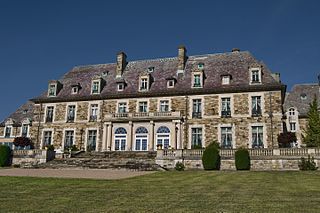
Aldrich Mansion is a late 19th-century property owned by the Roman Catholic Diocese of Providence since 1939. It is located by the scenic Narragansett Bay at 836 Warwick Neck Avenue in Warwick, Rhode Island, south of Providence, Rhode Island. Originally called Indian Oaks, and once the Senator Nelson W. Aldrich Estate. The extensive estate was developed in 1899 by Nelson W. Aldrich (1841–1915), a Republican Party politician who dominated state politics of the period. The main estate house is a sprawling stone French Renaissance structure with lavish interior decoration. The estate's surviving outbuildings include a boathouse and a caretaker's house, the latter located across Warwick Neck Avenue from the main estate. Aldrich's heirs sold the property to the Roman Catholic church in 1939, and it was adapted for use as a seminary. It now serves as the main campus of the Overbrook Academy, a Catholic girls' school. The property now known as "The Aldrich Mansion" still belongs to the Diocese of Providence, and is now available as a site for weddings, formal occasions, business conferences, etc. It is also occasionally used for film and television productions.
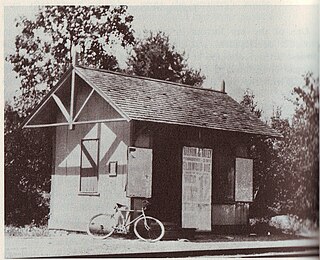
Primrose is a village in North Smithfield, Rhode Island, United States. The village is located in the area around Greenville Road and Providence Pike. The village takes its name from the Primrose railroad station which existed on Greenville Road for the Providence and Springfield Railroad which began service in 1873. The Primrose Fire Department and North Smithfield High School are located in the area. The historic Primrose Grange (1887) building is located on Grange Road as well as several eighteenth-century farms surrounded by stonewalls.
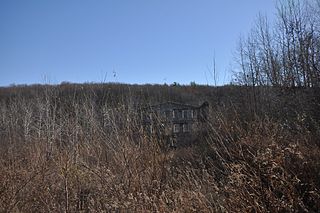
Oakland is a village in Burrillville, Providence County, Rhode Island, United States. It was developed in the 19th century at the site of a stone mill near the confluence of the Chepachet and Clear Rivers. It is one of the few remaining stone mills in this state. Most of the village is included in the Oakland Historic District, a historic district listed on the National Register of Historic Places. Most of the housing in the village was originally built to house mill workers, although there are several more elaborate houses built for mill executives.
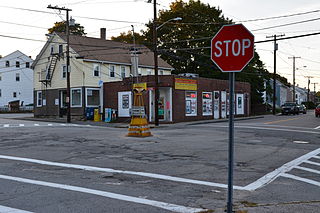
Albion is a village and historic district in Lincoln, Rhode Island, in the United States.

The Joseph Hicks House is a historic house at 494 Main Rd in Tiverton, Rhode Island. The house is a two-story wood frame structure, which was originally built with brick side walls, and became known locally as "the Brick House". These walls were covered over by clapboarding as part of a series of alterations in 1893, which did not otherwise significant obscure the building's modest Federal characteristics. The main facade is five bays wide, with a hip roof that has eaves deeper than normally found on Federal houses. The Hicks family, which owned it for many years, was one of the first to settle in the Tiverton area.

The Ashton Historic District is a historic district in Cumberland, Rhode Island. The district consists of a mill and an adjacent mill village that was built for the workers of the mill. It lies between Mendon Road, Scott Road, Angell Road, Store Hill Road, Front Street and Middle Street. The district was added to the National Register of Historic Places on November 1, 1984.
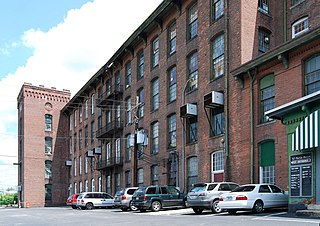
Berkeley Mill Village is a historic district encompassing the mill village of Berkeley in Cumberland, Rhode Island. The village is roughly bounded by Martin Street and Mendon Road on the north and east, railroad tracks to the west, and St. Joseph Cemetery to the south. The village, including a mill complex and mill employee housing, was built in 1872 by the Lonsdale Company. Most of the residential structures built are two-story brick duplexes, although Mendon Street is lined with a number of fine Queen Anne Victorian houses. A c. 1892 Stick-style church building, stands on Mendon Street at the northern end of the district.

The Brown Avenue Historic District is a rural historic district in Johnston, Rhode Island, USA. The district encompasses a rural and agricultural landscape centered on a 1-mile (1.6 km) stretch in the midsection of Brown Avenue, which runs between Hartford Avenue and Greenville Avenue. There are five farmsteads, with the Dame Farmstead at its center, whose farmhouses date to the late 18th century. A number of these farms are no longer in production, and part of the district is in Snake Den State Park.

Butler Hospital is a private, non-profit, psychiatric and substance abuse hospital for children, adolescents, adults, and seniors, located at 345 Blackstone Boulevard in Providence, Rhode Island. The hospital is affiliated with the Warren Alpert Medical School of Brown University, and is the flagship for Brown University's renowned department of psychiatry. Butler Hospital was a founding member, along with Women & Infants Hospital and Kent Hospital, of the Care New England health system in 1996.

The Wayland Historic District is a predominantly residential historic district on the east side of Providence, Rhode Island. It is a large area, covering about 122 acres (49 ha), bounded roughly on the north by Everett and Laurel Avenues, on the east by Blackstone Boulevard and Butler Avenue, on the west by Arlington Avenue, and on the south by Angell and South Angell Streets. This area, which was in the 19th century part of the Moses Brown farm, was platted for development in 1891, with most of the construction taking place in the early decades of the 20th century. Most of the residential properties in the district are single-family houses, typically built in revival styles popular at the time. They are set on similarly-sized lots with fairly uniform setbacks, and were typically built without garages. There are a number of two-family houses, and a small number of apartment buildings, most of which are found on the arterial roads of the area. There are several religious buildings, including several churches; the most architecturally distinctive religious building is the Jewish Temple Beth El, built 1951–54.

Anthony is a village along Route 117 within the town of Coventry, Rhode Island near the villages of Washington and Quidnick on the southwestern banks of the Pawtuxet River. The village comprises "Anthony, Arnold, Boston, Mapledale, Meeting, Taft, Washington and Laurel Avenue."
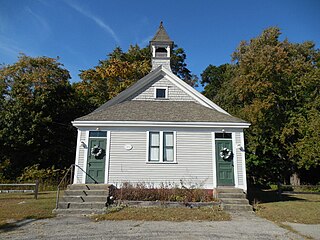
Belknap is a village within the city of Johnston in Rhode Island.

Samuel Clarke Farm is a structure dating to c. 1691. It's one of the earliest surviving structures in the State of Rhode Island. It is the central building of the farm, on a 40-acre parcel in Kenyon, Rhode Island, within the Town of Richmond. The farm is bordered to the west by the Beaver River. This property was originally part of a larger parcel that was sold in 1662 by the Niantic Sachem Wanumachon. This historic land transaction is known as the Stanton Purchase.
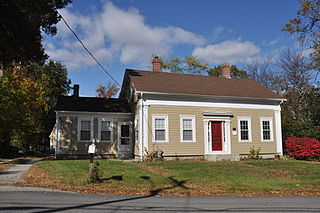
Hughesdale is a neighborhood in the town of Johnston, Rhode Island. Hughesdale is a primarily residential neighborhood in the southeast corner of the town, centered near Central Avenue and Atwood Avenue. It is situated near the villages of Simmonsville and Thornton.
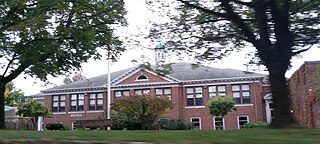
The William Winsor School is an historic elementary school in Smithfield, Rhode Island within the village of Greenville directly across from the Greenville Public Library. The school is named after William Winsor. As of 2017 the school may close due to a reconfiguration of the district.
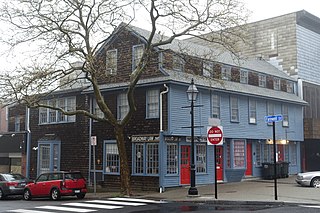
Governor Peleg Sanford House is one of the oldest houses in Rhode Island, possibly dating to the 1640s and certainly before the death of Peleg Sanford in 1701. The building is located at 2-6 Broadway in Newport, Rhode Island, and "Newport's most important surviving seventeenth-century buildings are found in the West Broadway Neighborhood." Local historians claim:
"the original part of the building was the home of Peleg Sanford, Governor of the Colony of Rhode Island between 1680 and 1683. He built this house sometime before his death in 1701, probably as early as the 1640s. By 1827, the building had been modified to include a storefront, reflecting Broadway's change from a residential to a commercial area. The building was enlarged again in 1845, and a mix of Greek Revival and Colonial elements were added. Many Newporters remember the store as "Lalli's" for the family that operated a variety store and stand in this building for 63 years. In 1923, P. Joseph Lalli bought the tobacco store located here and members of the Lalli family ran the store until 1986."


















